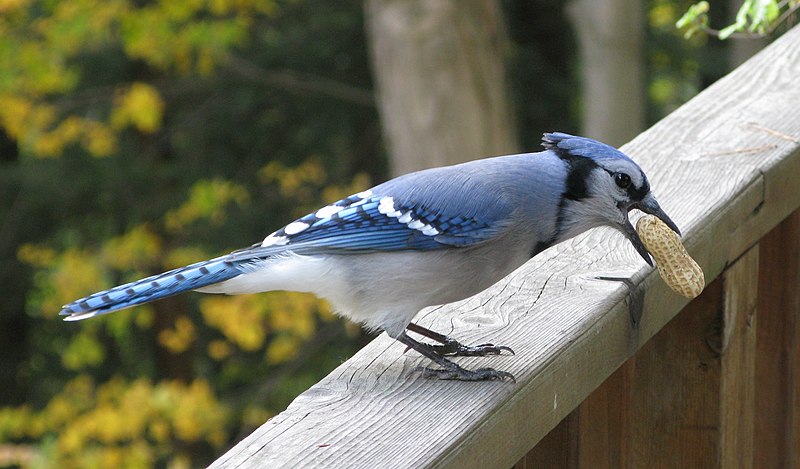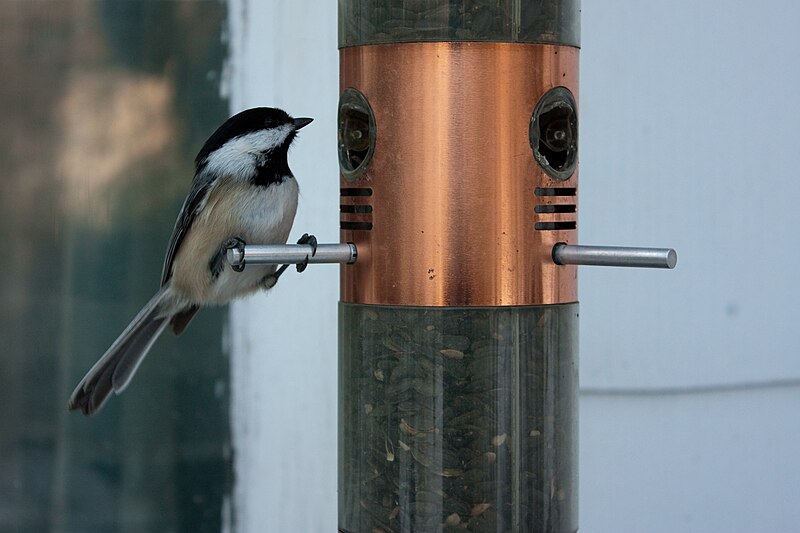 In the past I have written about the importance of providing wild birds with salt, grit and other essentials that are sometimes over-looked by folks maintaining bird feeders (please see article below). Today I’d like to highlight high-calorie foods and water, both of which become increasingly important as temperatures drop.
In the past I have written about the importance of providing wild birds with salt, grit and other essentials that are sometimes over-looked by folks maintaining bird feeders (please see article below). Today I’d like to highlight high-calorie foods and water, both of which become increasingly important as temperatures drop.
How Do They Cope?
I’ve always wondered how birds, which seem so fragile in some ways, managed to cope with frigid winter temperatures. The point was brought home to me when I cared for outdoor bird exhibits at the Bronx Zoo. I would arrive at 5 AM, and shuddered to see birds such as Bald Ibis and Indian Peafowl (which I associate with warm climates) sound asleep while covered in snow.
It turns out that the internal temperature of birds exceeds our own, hovering at 108-110 F in most species. This, and other cold-thwarting metabolic tricks, enables many to survive extremely cold temperatures. However, most birds have very fast metabolisms, and their caloric needs soar as the winter arrives. Eagles, owls, cranes and other outdoor birds I have cared for consumed much more food in winter than in summer.
One way you can help local wild birds survive this harshest of seasons is to stock your feeders with high-calorie foods.
Important Winter Foods
 Freeze-Dried Mealworms provide calories and also protein, which is hard to come by in winter. Many birds, even Robins and other insectivores, shift to berries during winter – these species will appreciate Mealworms and Fruit to Go.
Freeze-Dried Mealworms provide calories and also protein, which is hard to come by in winter. Many birds, even Robins and other insectivores, shift to berries during winter – these species will appreciate Mealworms and Fruit to Go.
Other especially important winter bird foods include suet bars, peanuts, and sunflower seeds. Many “people foods” also provide excellent nutrition for our avian neighbors, so be sure to save leftover fat trimmings, fruit, cream cheese, cooked rice, potatoes and similar items.
One thing to keep in mind, however, is uninvited guests – rats, raccoons and animals as large as bears are also quick to take advantage of free food. Most birds need to eat first thing in the morning and just before dusk – feeding at these times will lessen the likelihood of drawing nocturnal mammals. One night-time visitor you may wish to encourage, however, is the entertaining Flying Squirrel. These little fellows are great favorites of mine – a look at the video linked below will show you why.
Water and other Needs
 Birds also need water in winter (most continue to bathe despite the cold) – often this is extremely critical, as winter weather may be very dry. Our Bird Bath De-Icer will enable you to provide ice-free water even at sub-zero temperatures. It is thermostatically set to operate only when needed, thereby saving money and electricity, and can be spray-painted to match your bird bath.
Birds also need water in winter (most continue to bathe despite the cold) – often this is extremely critical, as winter weather may be very dry. Our Bird Bath De-Icer will enable you to provide ice-free water even at sub-zero temperatures. It is thermostatically set to operate only when needed, thereby saving money and electricity, and can be spray-painted to match your bird bath.
Birds also have a hard time finding grit, calcium, salt and shelter during the winter – please see the article below for more info on providing these and other necessities.
Further Reading
Winter Bird Feeding Tips for UK Residents
A wonderful video of Flying Squirrels at bird feeders
Hand Taming Wild Birds at the Feeder
Grit, Calcium and other Winter Bird Needs
Blue Jay with Peanut image referenced from wikipedia and originally posted by Saforrest
Chickadee at Feeder image referenced from wikipedia and originally posted by Furntree
 That Bird Blog – Bird Care and History for Pet Birds
That Bird Blog – Bird Care and History for Pet Birds



